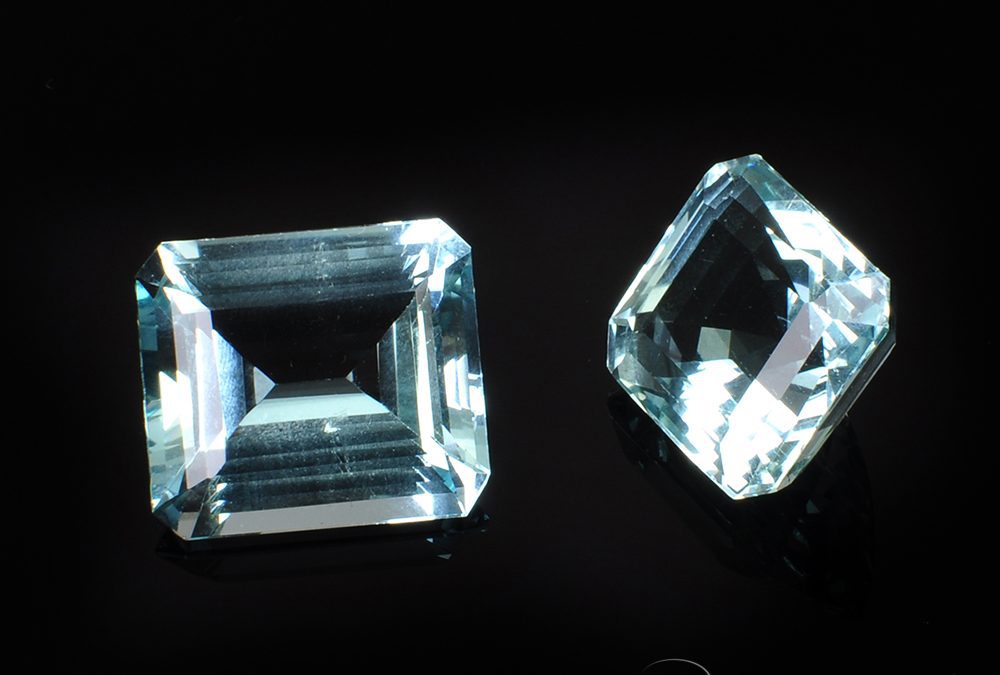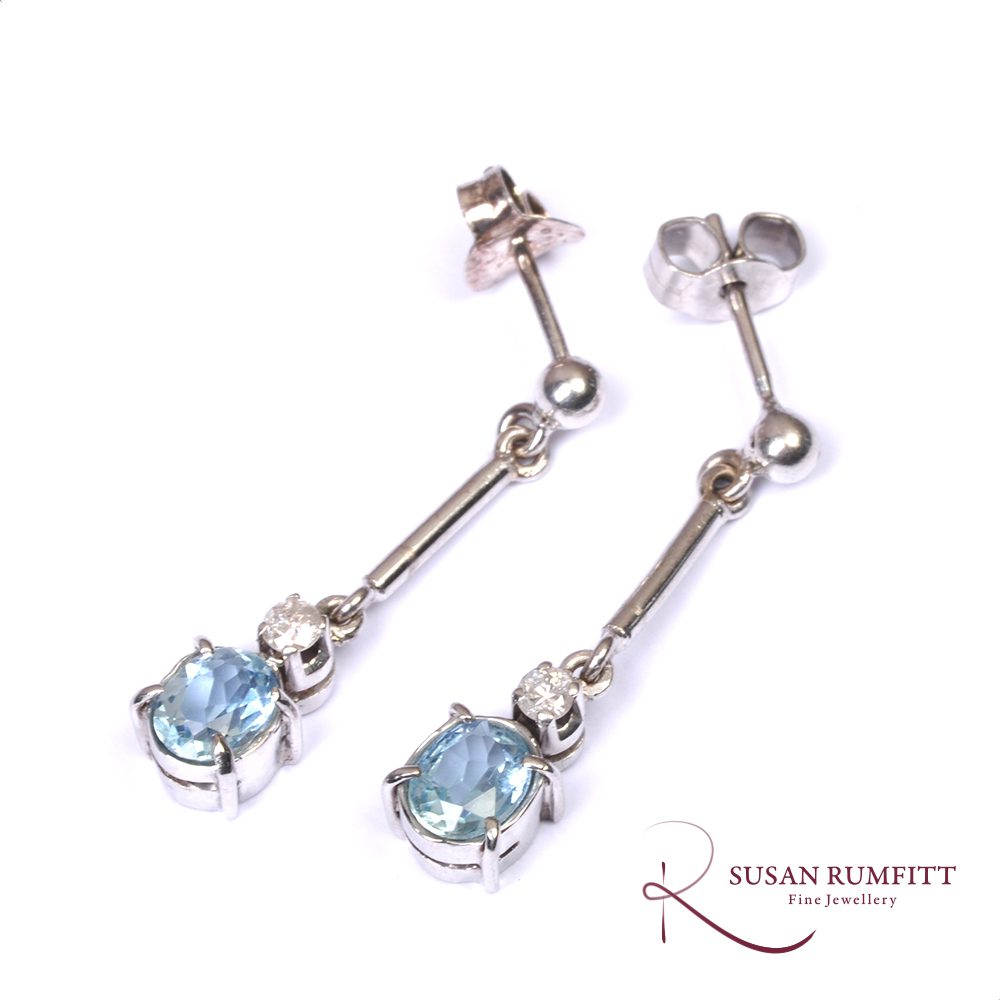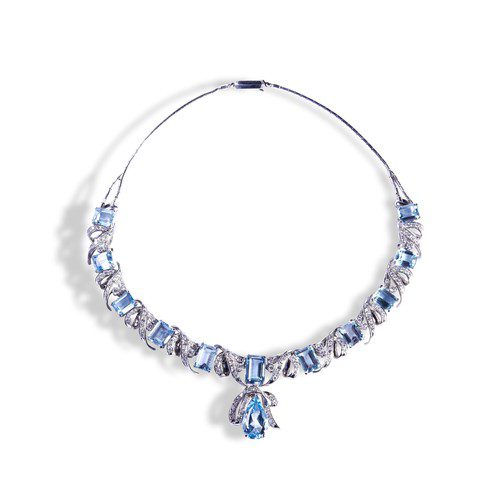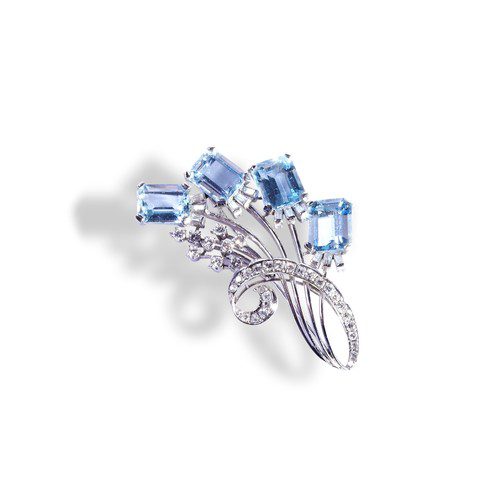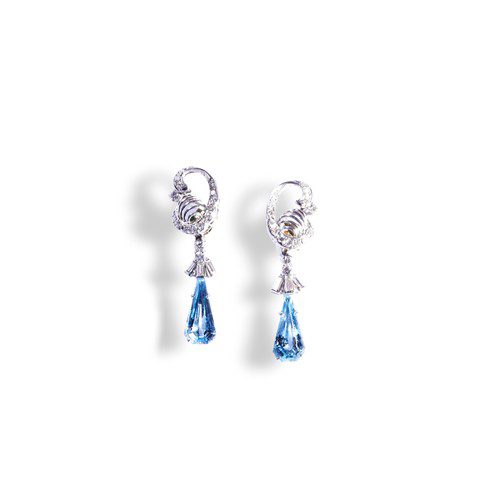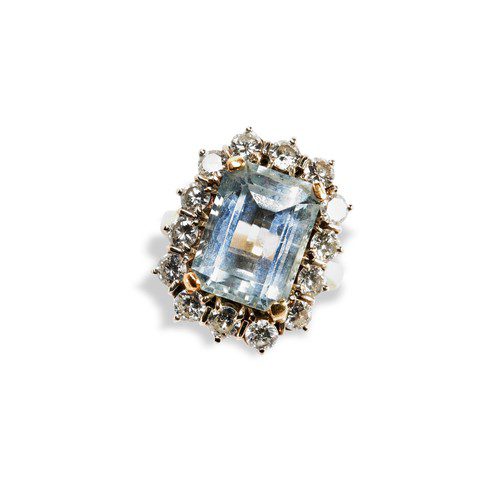Aquamarine is the blue to greenish-blue variety of beryl and is one of the most universally admired gems. Typically thought of as the greenish-blue, it’s name is derived from the shades of a tranquil sea on a summer’s day. Other varieties of beryl include emerald (green), heliodore (yellow) and goshenite (the pure colourless form of beryl).
Aquamarine meaning
Considering the colour of aquamarine it is not hard to see why, since ancient times, it has been associated with Poseidon and Neptune, gods of the sea. As such, it was thought to protect ships, calm stormy seas, and bring sailors safely to port. Even Pliny waxed lyrical about the attractions of this watery stone, “the lovely aquamarine, which seems to have come from some mermaid’s treasure house, in the depths of a summer sea, has charms”. Indeed, aquamarine is still reputed to promote safe travel on water, is associated with the watery sign of Pisces, and is the birthstone for March.
Like many beryls except emerald, aquamarine is quite durable and can form large crystals with very few inclusions. The relative clarity of the gem is thought to be why the Romans also endowed it with the virtues of purity and harmony. As they also considered frogs to be a symbol of harmony, many traditions formed combining aquamarines and frogs to calm conflicts such as gifting a frog carved from aquamarine.
Aquamarine history
Aquamarine’s reputation for purity persisted through the Middle Ages when it was thought to give the gift of clear sight and was used as an oracle stone in magic mirrors and crystal balls. It was also perceived to be able to purify drink tainted with poison. As the ruling classes of the Middle Ages seem to have been collectively obsessed with the fear of consuming poison, it became a popular gem during that time. It can be seen in two of Europe’s oldest surviving crowns: The crown of St Stephen from Hungary, and the crown of St Wenceslas, which is reputed to bring death within a year to any who wrongfully wear it. Certainly, it’s widely believed that SS officer Reinhard Heydrich was assassinated less than a year after he was rumoured to have placed the crown on his head and declared himself Protector of Bohemia and Moravia.
Less controversially, the Emperor Louis XV of France also equated aquamarine with purity, believing that the calming colour and clarity of his 109 carat aquamarine had the ability to calm his fears and grant him clarity of intellect. This famous aquamarine is now known as the Hirsch Aquamarine and is set as a pendant in a delicate looping frame set with diamonds.
At the time that Louis XV acquired his large gem, aquamarine had just been discovered in Siberia and by the end of the 18th century was arriving in Europe in much larger quantities. Previously, it had been thought of as an Indian gem and had even been termed ‘oriental emerald’ at times. However, like many gems, it was the discovery of aquamarines in the gem-laden Brazil that provided a steady stream of high-quality aquamarines. It was from these deposits that the President of Brazil gifted Eleanor Roosevelt the then largest ever cut aquamarine and the stunning aquamarines that made up Queen Elizabeth II’s Brazilian Tiara.
The largest ever recorded gem quality aquamarine mined was nearly a metre long and weighed nearly 100 pounds (45kg). In what must be somebody’s worst day at work ever, the gem was dropped and broke into three pieces. The largest of these pieces was cut by Bernd Munsteiner into a huge obelisk form standing 14 inches (36 cm) tall by 4 inches (10 cm) and weighing 10,363ct (26kg), which is still the largest aquamarine. Named Dom Pedro, it can now be found in the Smithsonian Museum.
Aquamarine colour
Whilst more saturated aquamarines have always been preferred, the colour favoured has changed through time. Historically aquamarine was prized for its sea-like greenish tints. More recently a purer blue colour has been preferred, and many gems are gently heated to remove the yellow tones. Perhaps stimulating this shift of preference was the discovery in the 1950s of a deposit of aquamarines with exceptional clarity and a naturally deep, pure blue colour in the Santa Maria de Itabira mine. These quickly became the most desirable, and expensive of aquamarines. Today the Santa Maria mine is exhausted but the name is still used in the trade for aquamarines of a particular colour and clarity.
Very recently we have seen a rise in demand for the more traditional greenish-blue gems, perhaps because of a desire for an unheated natural stone, or in the search for a more unique antique look. The variety of delicate tones from warm greenish blue to pure cool blue ensures aquamarines flatter any skin tone and is sure to be one reason that they will continue to be such popular gems.
Aquamarines at Susan Rumfitt Fine Jewellery
Our collection of fine jewellery for sale is ever changing and currently includes these pretty aquamarine and diamond drop earrings.
Aquamarines at auction
There are also some fantastic aquamarines coming up in an auction of fine jewellery and watches in collaboration with Dore & Rees.
Taking place at the Dore & Rees auction house in Frome, Somerset, the auction can also be attended online and starts at 10.30am on March 22nd. A viewing of selected pieces will take place at Susan’s Gallery in Harrogate until Thursday, March 16th, by appointment only – do contact us on 01423 705 198 if you are interested.
